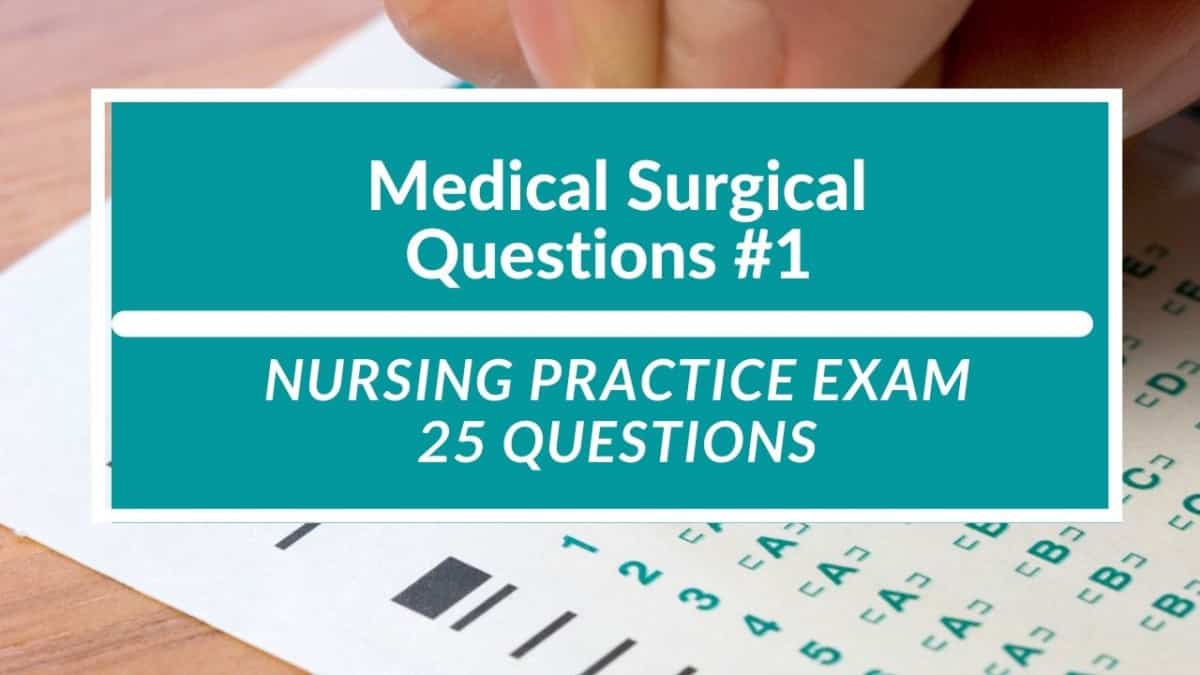Last updated on October 8th, 2021 at 10:00 am
NCLEX Nursing School Practice Exam
Medical Surgical Practice exam 25 questions
#1. A nurse is performing a health teaching session about pneumonia in the community. The nurse informs the group that the organism that most commonly causes adult community-acquired pneumonia is?
#2. A 45-year old male client with a diagnosis of chronic pancreatitis is admitted in the gastrointestinal unit. The nurse checks the laboratory results and finds which of the following serum amylase levels as indicative of the patient’s diagnosis?
Answer: 200 units/L
Rationale: Chronic pancreatitis exhibits an increase in serum amylase levels but does not exceed 3 times of the normal value. The normal range for serum amylase level is 25 to 151 units/L. Options B, C, and D are all within normal limits, while option A. 200 units/L is indicative of chronic pancreatitis. On the other hand, acute pancreatitis involves the rise in serum amylase levels which is rapid and may go past five times the normal value.
#3. A nurse is about to administer a bolus tube feeding via nasogastric tube. Prior to the procedure, the nurse checks the residual amount and finds it to be 170 mL. Which of the following nursing actions is appropriate in this scenario?
Answer: Hold the feeding and notify the physician and dietitian
Rationale: Residual gastric amounts of more than 100 mL indicate that the feeding must be put on hold. The dietitian must be informed of this delay in feeding, and the physician must also be informed to further assess the cause of delayed gastric emptying. The residual gastric amounts are measured every 4 to 8 hours, depending on the prescription of the dietitian.
#4. A nurse has just finished inserting a new nasogastric tube to a patient suffering from severe dysphagia. Which of the following pH values indicates that the tube placement is correct?
Answer: 3.0
Rationale: One of the tests to verify NG tube placement is called pH testing. The normal pH level is between The gastric contents tend to be acidic, so the pH value of the gastric aspirates must be 3.5 or lower. Out of all the choices, option B. 3.0 is indicative of acidic gastric aspirate.
#5. A 50-year old male patient with esophageal varices returns to the ward following an insertion of a Sengstaken-Blakemore tube. Which of the following items must be available at bedside at all times?
Answer: Sterile scissors
Rationale: A Sengstaken-Blakemore tube is indicated for patients with uncontrolled bleeding to control hemorrhage temporarily. If the gastric balloon ruptures and the tube entirely moves upward, the nurse can urgently cut the balloon lumens using a pair of sterile scissors. The client may also benefit from having a saline irrigation set at the bedside, although this does not take priority over ensuring that a pair of scissors is at hand in case of a balloon rupture. A client with tracheostomy, on the other hand, requires an obturator and a Kelly clamp at bedside.
Results
Last updated on October 8th, 2021 at 10:00 am
Last updated on October 8th, 2021 at 10:00 am


